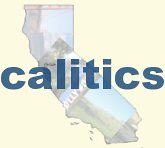The Two Paradoxes
Here are two very simple items in the news that show the pressing need for a very large and properly targeted stimulus to the economy, through government spending, right now. Bookmark them, write them down, tell your friends and lawmakers.
One, mass transit ridership is surging, due to a number of factors (people not being able to afford auto transportation, more energy consciousness). But because state budgets are strapped for cash, those bus and rail lines are seeing their prices rise and their routes cut:
St. Louis may be girding itself for some of the most extreme transit cuts in the nation, but it is hardly alone. Transit systems across the country are raising fares and cutting service even when demand is up with record numbers of riders last year, many of whom fled $4-a-gallon gas prices and stop-and-go traffic for seats on buses and trains.
Their problem is that fare-box revenue accounts for only a fifth to a half of the operating revenue of most transit systems — and the sputtering economy has eroded the state and local tax collections that the systems depend on to keep running. “We’ve termed it the ‘transit paradox,’ ” said Clarence W. Marsella, general manager of Denver’s system, which is raising fares and cutting service to make up for the steep drop in local sales tax.
The billions of dollars that Congress plans to spend on mass transit as part of the stimulus bill will also do little to help these systems with their current problems. That is because the new federal money — $12 billion was included in the version passed last week by the House, while the Senate originally proposed less — is devoted to big capital projects, like buying train cars and buses and building or repairing tracks and stations. Money that some lawmakers had proposed to help transit systems pay operating costs, and avoid layoffs and service cuts, was not included in the latest version.
And here's another paradox, known familiarly as the paradox of thrift, where people are saving more and spending less, which is actually hurting the economy and threatening jobs.
On Friday, the government reported Americans' savings rate, rose to 2.9 percent in the last three months of 2008. That's up sharply from 1.2 percent in the third quarter and less than 1 percent a year ago.
Like a teeter-totter, when the savings rate rises, spending falls. The latter accounts for about 70 percent of economic activity. When consumers refuse to spend, companies cut back, layoffs rise, people pinch pennies even more and the recession deepens.
The downward spiral has hammered the retail and manufacturing industries. For years, stores enjoyed boom times as shoppers splurged on TVs, fancy kitchen decor and clothes. Suddenly, frugality is in style.
Here's the important point: we should WANT these things to happen. Increasing the savings rate and mass transit ridership makes this a more stable economy and a more livable planet. But at the moment, the two paradoxes cannot be carried off. And once you recognize this, you understand that the only way to allow increased savings and transit ridership is through job-creating stimulus. Investment won't save bus lines; nobody wants to invest. Wages aren't increasing, especially in this downturn when it's lucky if you have a job tomorrow. So only eliminating excess job capacity in the market will allow people to keep saving while increasing consumer spending. And only investment in OPERATING COSTS on transit and rail lines will allow transit to flourish now and in the future with the capital spending. Otherwise, we lose these two very positive trends for decades.
We don't have to hurt the economy as a consequence of riding buses and trains and saving our hard-earned money. In this extraordinary time, stimulus is the only remedy.
Labels: economy, federal spending, mass transit, paradox of thrift, savings rate, stimulus package






<< Home